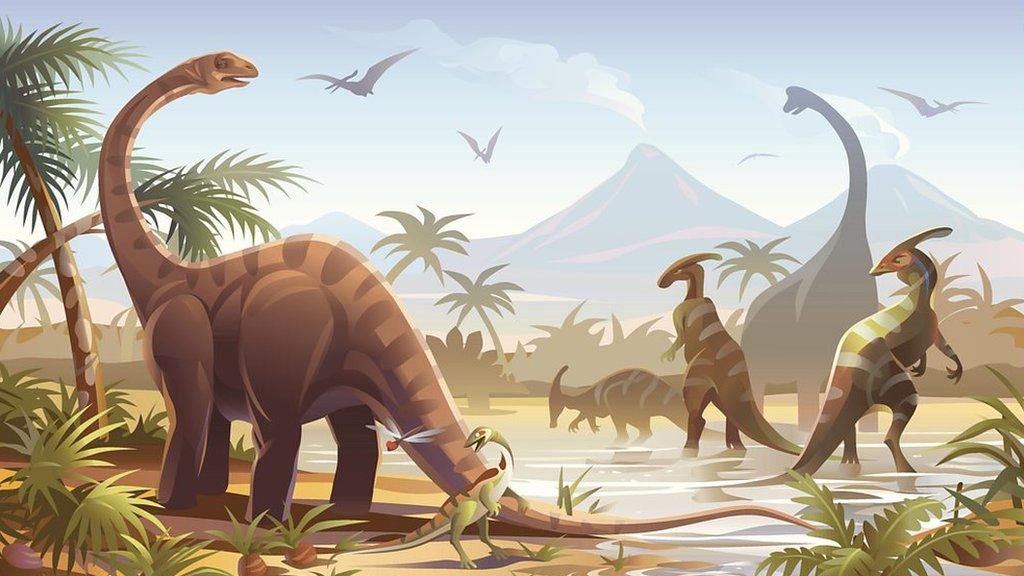Dinosaur with strange head lived on an island of miniature creatures
- Published
- comments
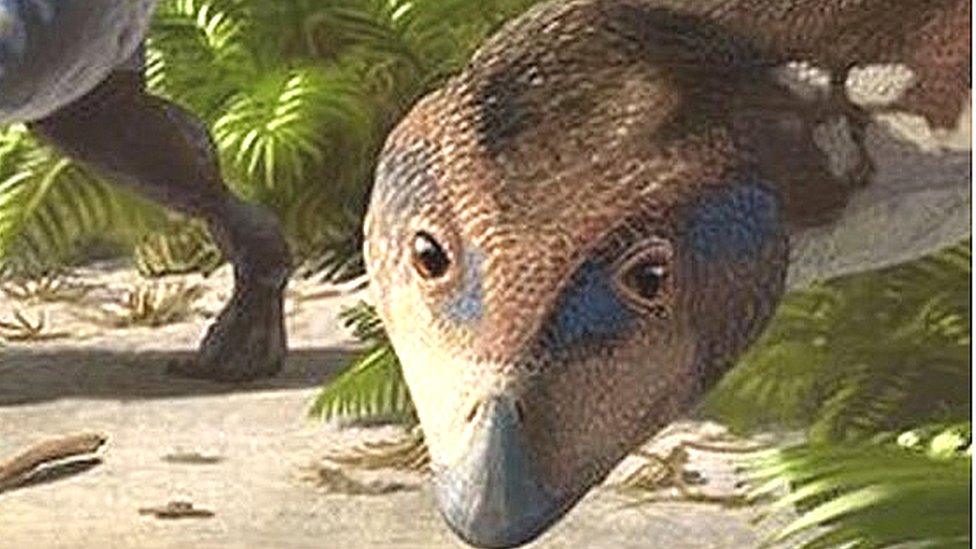
A newly identified small dinosaur with a strange flat head lived on an island of tiny prehistoric creatures 70 million years ago.
The dinosaur named Transylvanosaurus platycephalus (flat headed reptile from Transylvania) was first discovered in western Romania.
Roughly the size of a man, the dinosaur and the other creatures it shared the island with were all much smaller than their bigger relatives that lived elsewhere during Earth's Cretaceous period.
Millions of years ago the area of Romania where the dinosaur was found was an island surrounded by water and cut off from the mainland.
Biologists believe the animals on the island were small because of something called 'island rule', where dinosaurs isolated from the rest of their species gradually shrank in size, whereas other animals that were smaller to start with actually began to get bigger.
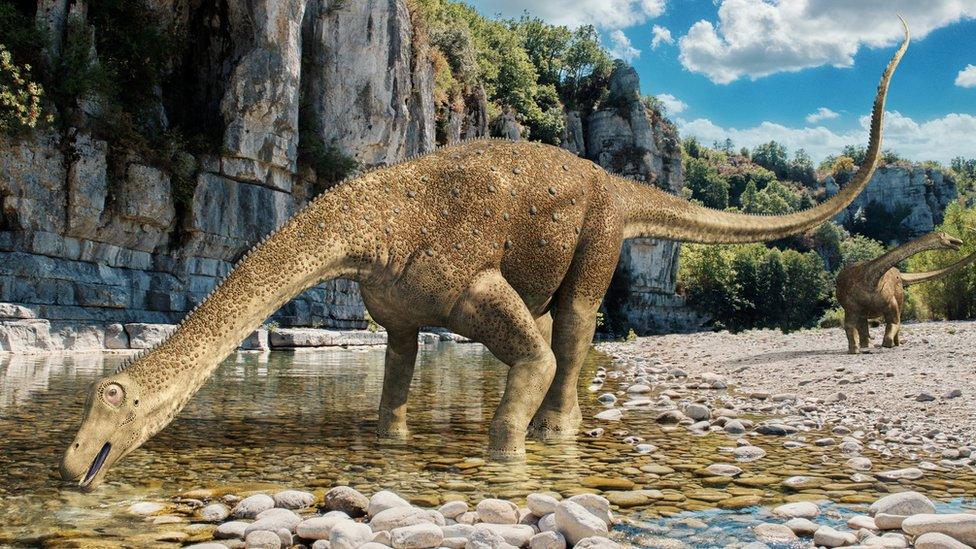
Long-necked dinosaurs known as sauropods were also much smaller than normal on the island
For example, on the island Sauropods, dinosaurs with massively long necks and tails, only reached average lengths of about 20 feet - that's shorter than a double decker bus in the UK.
But typically, remains of Sauropods found elsewhere show them to be among the largest creatures that have ever lived, normally reaching up to three times the size of the animals found on the island.
It's not totally understood why the animals shrank on the island but scientists say it could've been because of limited food available there.
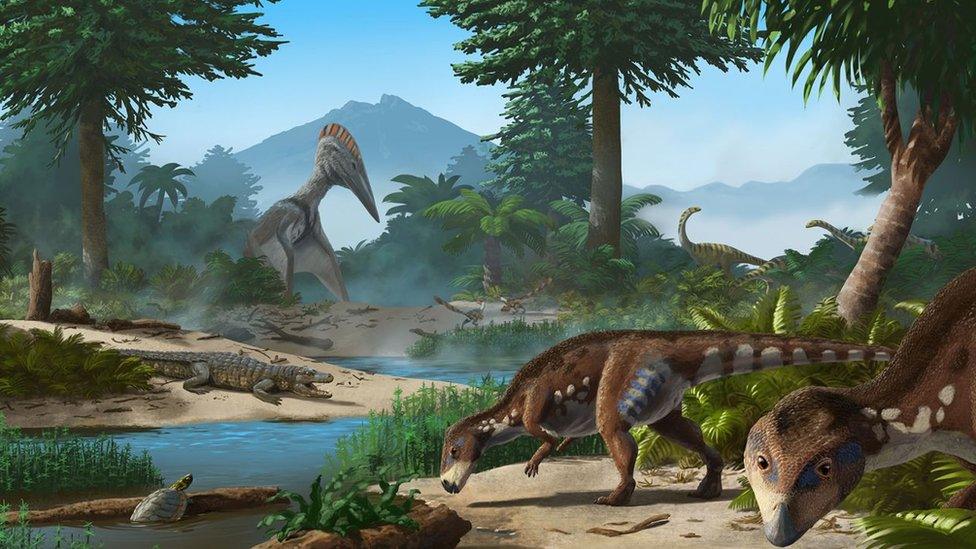
Transylvanosaurus was a herbivore, meaning it had a plant based diet, and was part of a family of dinosaurs known as Rhabdodontidae that were common during the Late Cretaceous period, 70 million years ago.
But unlike its relatives, the little dinosaur found in Romania had a head that was far wider than other Rhabdodontidae species.
The Big Question: What's the difference between all the dinosaur periods?
First discovered in 2007, its fossilised bones had survived for millions of years because of sediments - rocks and minerals - within an ancient riverbed.
"If the dinosaur had died and simply lain on the ground instead of being partly buried, weather and scavengers would soon have destroyed all of its bones and we would never have learned about it," said Felix Augustin, from the University of Tübingen in Germany and also the study's co-author.
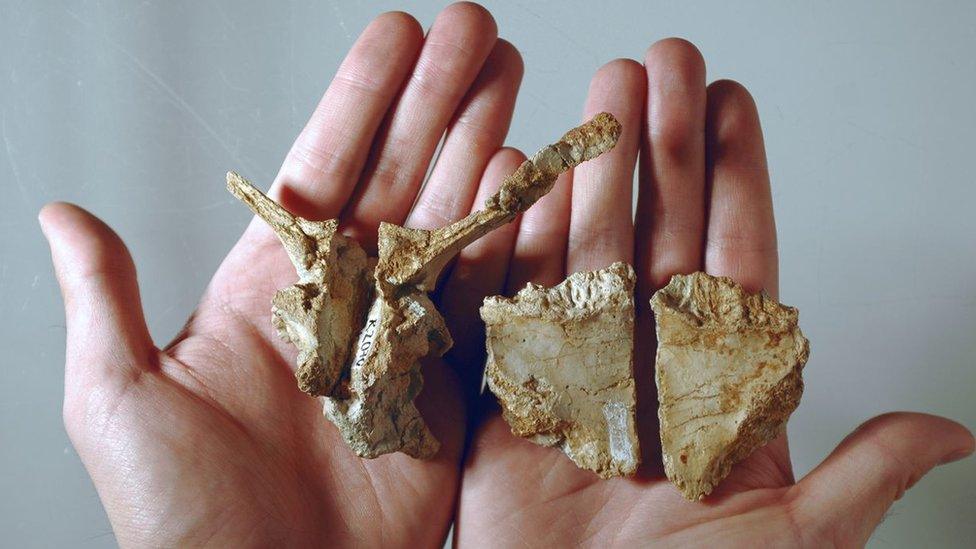
None of the bones found by palaeontologists were longer than 12 centimetres - that's smaller than your school ruler! - but they have since revealed a remarkable amount of detail about the dinosaur such as it had a powerful, thick tail and walked on two legs.
How the species turned up in an area that is now modern-day Romania is unclear, its nearest relatives have been found in what is now France. But experts guess that the species could've walked across a land bridge created by earthquakes or may have swum to the island.
"They had powerful legs and a powerful tail," Augustin said.
"Most species, in particular reptiles, can swim from birth."
- Published28 November 2022
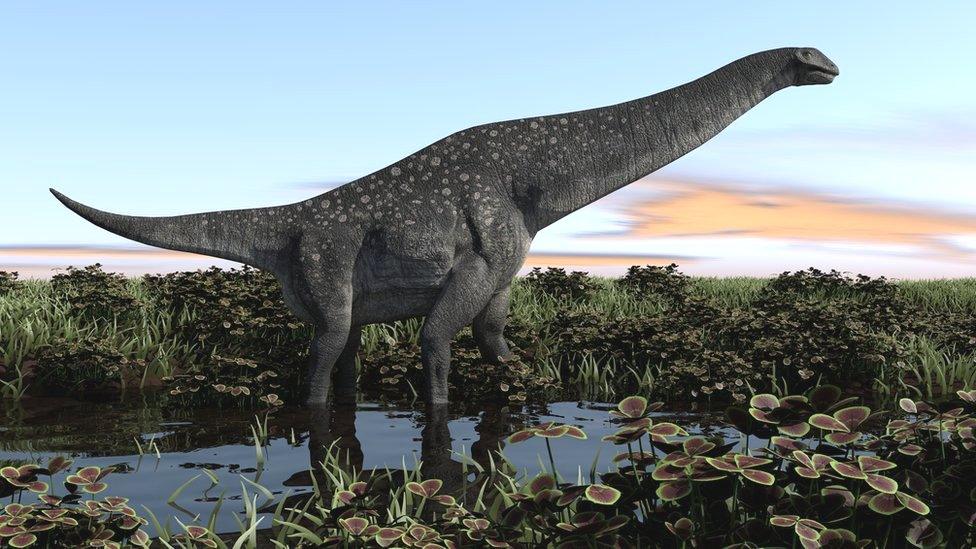
- Published13 September 2021
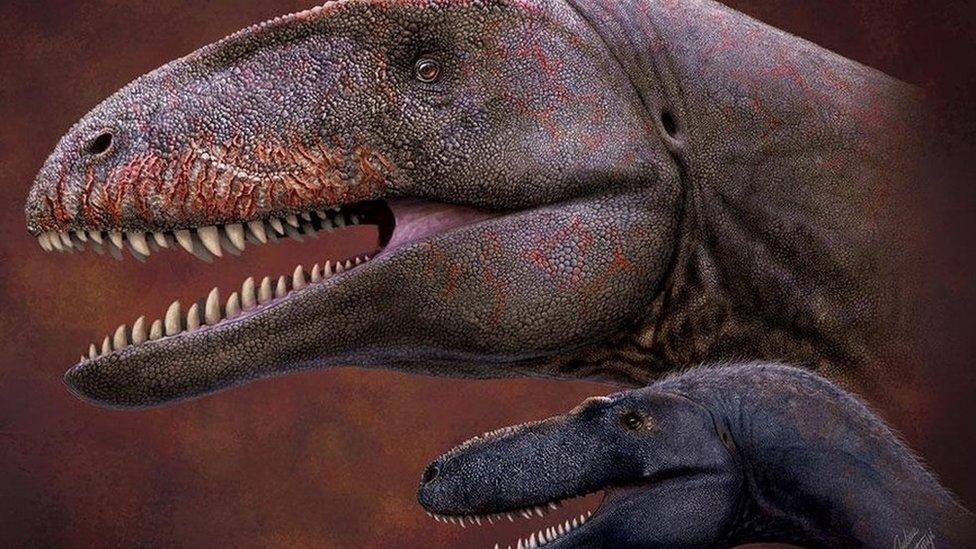
- Published9 June 2022

- Published23 April 2019
